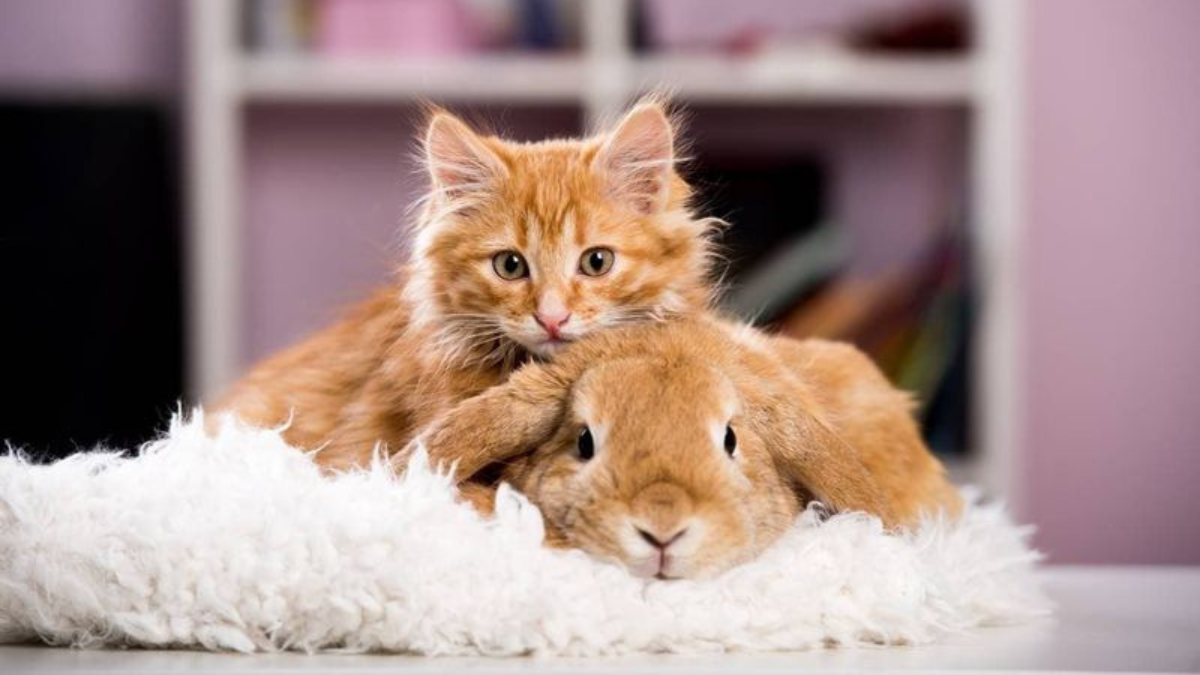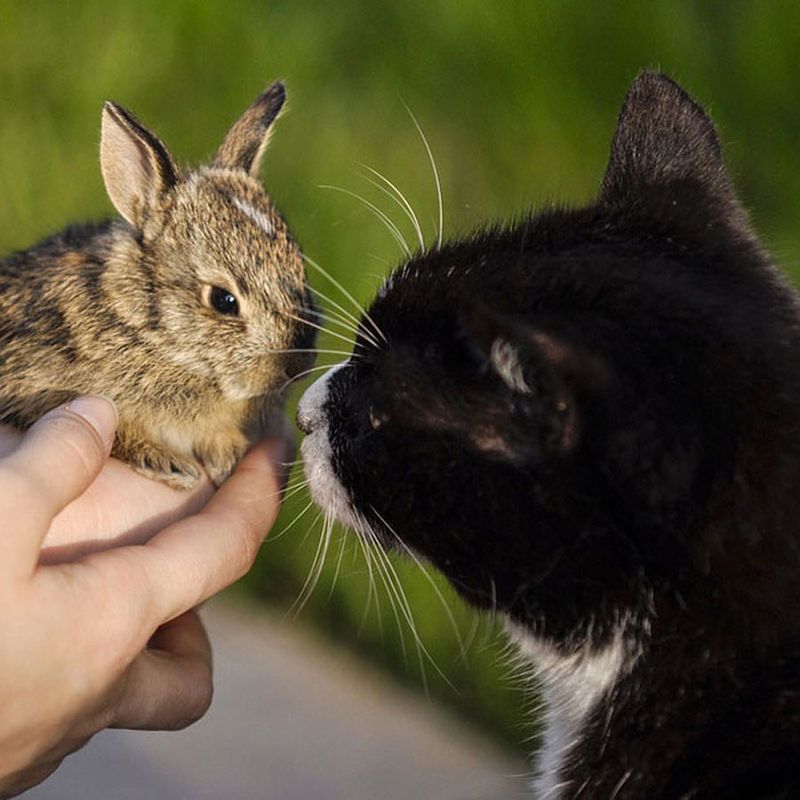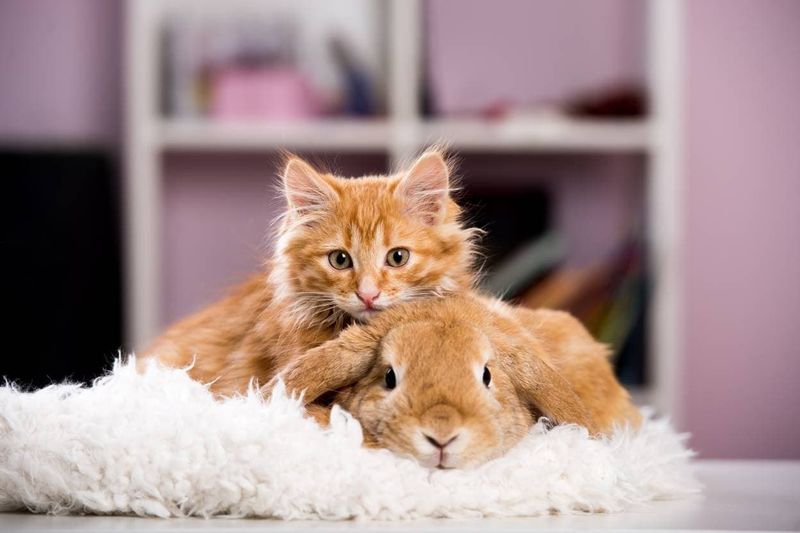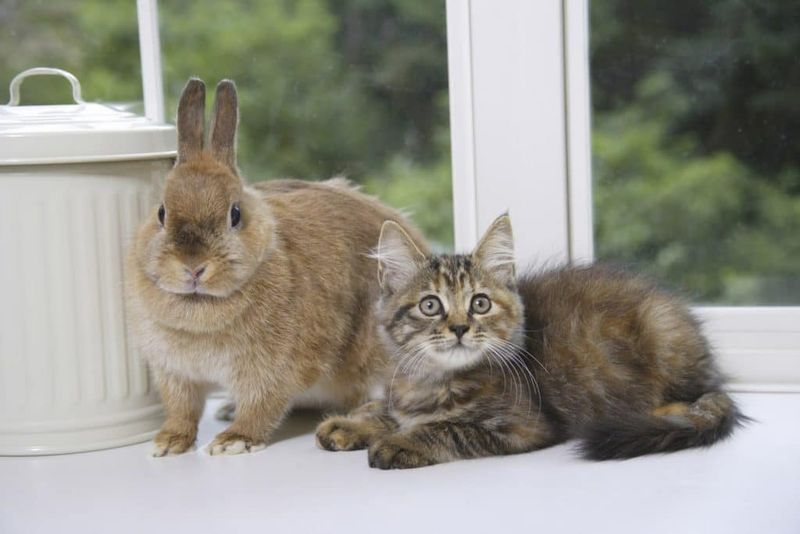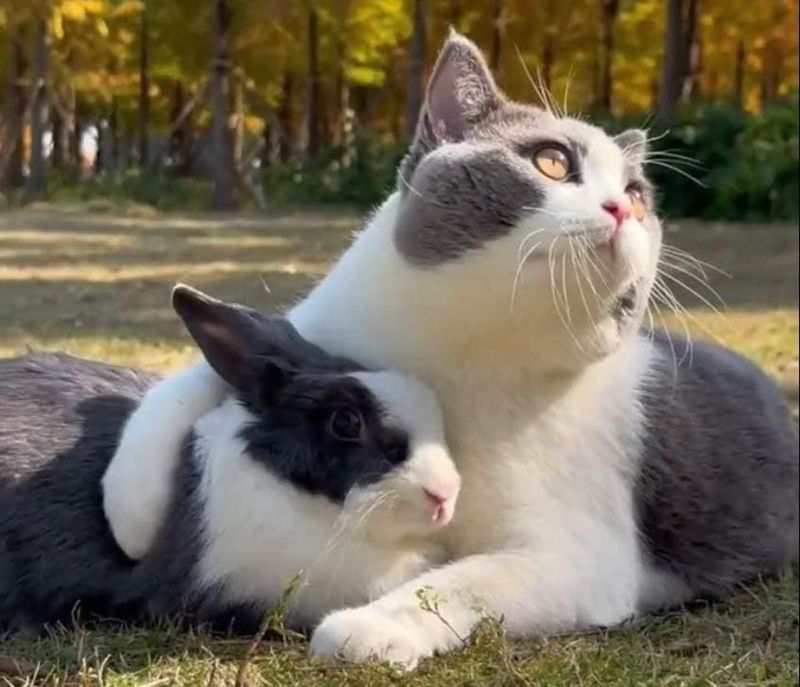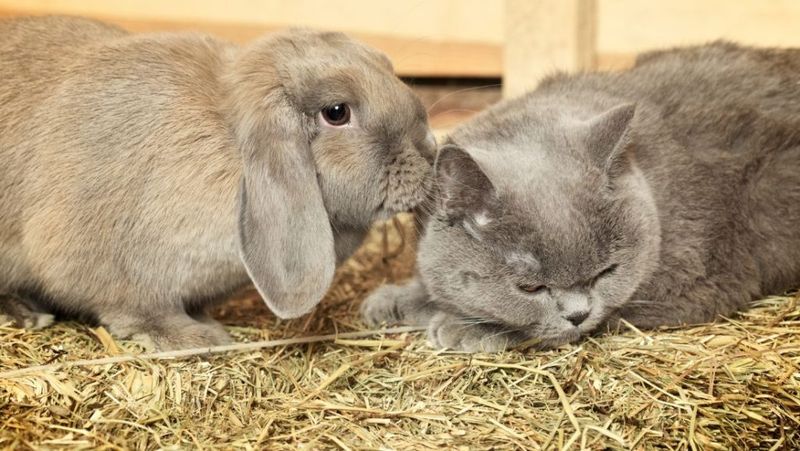📖 Table of Content:
The idea of cats and rabbits peacefully coexisting under one roof is a charming vision for many pet owners. However, the reality of introducing these two animals can often be more complex. While both can make wonderful companions, their differences in behavior and needs can sometimes lead to tension.
Cats and rabbits have contrasting instincts and ways of communicating that may not always align. A cat’s predatory nature can be triggered by the quick movements of a rabbit, while rabbits can be startled by a cat’s curious behavior. Understanding these fundamental differences is key to ensuring a smooth and safe introduction.
Before allowing a cat and rabbit to share a living space, it is essential to consider their individual needs and personalities. Proper preparation, patience, and supervision are crucial for fostering a peaceful relationship between these two animals. Taking the time to learn how they interact can help prevent stress and ensure both pets feel secure.
1. Natural Predator-Prey Instincts
Cats are born hunters with strong predatory instincts. Your sweet kitty who cuddles with you might see your rabbit as potential prey rather than a playmate. This hunting instinct varies among cats – some barely notice rabbits while others become intensely focused on chasing them.
Rabbits, being prey animals, have evolved to be extremely sensitive to potential threats. Even the gentlest approach from a curious cat might send your bunny into panic mode, potentially causing stress-related health issues.
Understanding these fundamental instincts helps set realistic expectations about their relationship potential.
2. Personality Matters More Than Breed
Every animal has its own unique personality, regardless of species. A mellow, older cat might be less interested in chasing a rabbit than an energetic kitten. Similarly, some confident bunnies may be less fearful around cats than their skittish counterparts.
Age plays a significant role,e too. Kittens raised around rabbits often develop less predatory behavior toward them. Older cats with established hunting habits might never view rabbits as anything but prey.
Take time to honestly assess both pets’ individual temperaments before considering an introduction.
3. Creating Safe Spaces For Both Pets
Safety comes first when housing both species. Rabbits need escape routes and hiding spots where cats cannot reach them. Consider installing baby gates that allow your rabbit to hop through but block your cat’s access to bunny-only zones.
Your rabbit’s enclosure must be completely cat-proof. Even the sweetest cat might paw at a caged rabbit, causing extreme stress. Provide elevated areas where your rabbit can observe surroundings without feeling threatened.
Both animals should have separate feeding areas to prevent resource guarding and allow stress-free mealtimes.
4. Supervised Introduction Techniques
First meetings require careful planning. Keep your rabbit in a secure carrier while allowing your cat to investigate from a distance. Watch both animals’ body language closely – a rabbit thumping its feet or a cat with dilated pupils and twitching tail indicates stress.
Use positive reinforcement by rewarding calm behavior with treats. Never force interaction or punish either pet for natural responses.
Gradually increase exposure time over weeks, not days. Some pet owners report success using mesh barriers that allow scent exchange without physical contact during early introduction phases.
5. Health Concerns When Housing Both
Cats and rabbits can transmit certain diseases to each other. Parasites like fleas can jump between species, and some bacterial infections may spread through shared environments. Regular veterinary check-ups for both pets become especially important in multi-species households.
Litter box arrangements require thoughtful planning. Cat feces contain parasites potentially harmful to rabbits, while rabbits need constant access to their own clean litter areas.
Consider separate play zones to minimize germ transmission and reduce stress-induced health issues that can affect either animal’s immune system.
6. Body Language Translation Guide
The body language of cats and rabbits differs greatly. A rabbit’s freeze response could activate a cat’s predatory instincts, and a cat’s bold approach might scare a rabbit. Recognizing the signs each animal gives helps avoid potential misunderstandings.
Happy rabbits perform joyful hops called “binkies” and may grind their teeth softly when content. Relaxed cats blink slowly and hold their tails in a gentle curve.
Warning signs include a rabbit thumping its hind legs or a cat’s swishing tail, flattened ears, or intense staring. Recognizing these signals allows timely intervention.
7. Success Stories: When Friendships Bloom
Against the odds, some cats and rabbits form genuine bonds. The key factor in successful pairings? Patience. Most harmonious relationships develop after months of careful supervision and positive association building.
Size can influence success rates. Larger rabbit breeds may intimidate some cats, creating a more balanced dynamic. Young animals introduced properly often show the best results, though adult pets can still learn to coexist peacefully.
Even in the best scenarios, expect a relationship closer to respectful roommates than cuddling companions. True friendship between these species is possible but remains the exception rather than the rule.
